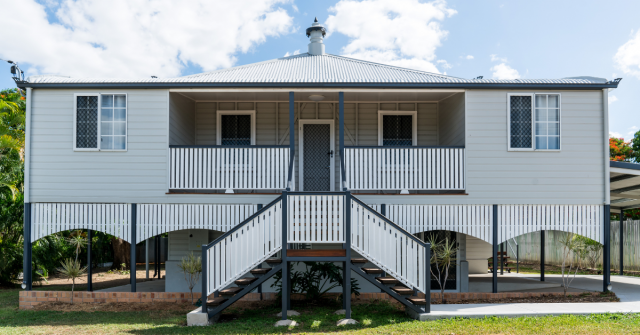Buying a home is a huge investment. You want to make sure it's the right house for you and isn't going to be a constant money pit in the future. Unfortunately, it's not unheard of for sellers and real estate agents to present a home in a more positive light than it really is. That's why you really what to do all the checks you can before buying the property to make sure you are getting what you're paying for. A building and pest inspection is a great way to do this as it means a professional builder will thoroughly check the home for any building defects and termites. When looking through the house and the subsequent building and pest report, here are a few things to look for that are a red flag that could potentially cost you thousands:
1. Raising damp and other moisture damage
Rising damp and moisture damage is particularly concerning if found during a building and pest inspection. As these issues can lead to more serious problems and structural issues if left untreated. Raising damp is caused by moisture from the ground raising up through the walls. It can lead to damage to your flooring, plaster and other decorative finishes. It is also often accompanied by an unpleasant smell and can lead to health issues like mould.
2. Live termites and termite damage
Termites are highly active in Queensland and can cause serious damage to a home if left undetected. This damage can be costly to repair so it’s important to get a clear understanding of the extent of the termite damage and whether there is still current termite activity at the property before you buy it.
The best course of action, if termites or termite damage is noted in your building and pest report, is to contact the inspector. Every situation will vary as termites are living creatures and strategies for treatment or repairs need be assessed on a case-by-case basis.
3. Thermal imaging abnormalities
The best building and pest inspectors will use a thermal imaging camera during the inspection. This technology allows our inspectors to identify anomalies that may not be visible to the human eye. Such as abnormal hot/cold patterns which can indicate termite activity and moisture problems.
If thermal imaging anomalies have been identified, it’s important to determine the cause of the anomaly. For example, an abnormal cold pattern besides a shower may indicate either a leaking shower, timber fungal decay or termites. Depending on the circumstances, you may need to contact other licensed trades for further advice, recommendations, and repairs.
4. Subfloor and foundation problems
If the property is highset (meaning it is up off the ground), it’s important to look for any issues with the subfloor in the report. As the subfloor is the foundation of the home any issues in this area can affect the entire house. Depending on the severity of the issue, it may even compromise the structural integrity of the home.
Common subfloor issues include cracked foundation stumps, poor ventilation and water ponding underneath the house. The cost of repairs varies greatly depending on the type of problem. For example, fixing poor ventilation underneath the subfloor is much easier than replacing cracked foundation stumps.
5. Major building defects
The Queensland Building and Construction Commission defines major defects as any issues that affect the livability or safety of the property. It may also include any minor issues that could turn into serious problems down the track.
Common major defects include safety issues with balustrades and balconies, cracked tiles in bathrooms, excessive cracks or high moisture readings. Any major defects will be clearly listed in the building and pest report and should be addressed as soon as possible. The cost of repairs will vary depending on the type and severity of the building defect.



















